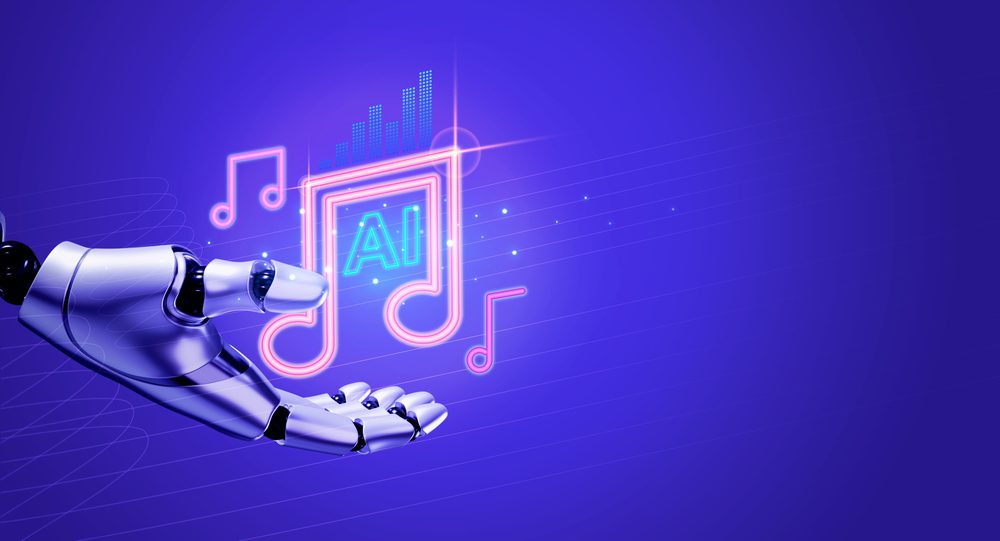The advent of artificial intelligence has transformed the manner in which we create, listen to, and even experience music. With AI-enabled software now capable of generating full songs in a matter of minutes, the majority of creatives are asking themselves a relevant question: Can human creativity coexist with AI music generation? Or is this the beginning of an algorithmic, lifeless musical era?
Let us explore the potential, limitations, and future of this emerging partnership between human artists and machine intelligence.
The Emergence of AI in Music
AI music generators have progressed exponentially in recent years. Through deep learning, neural networks, and big datasets, these computers now mimic complex music styles, compose harmonies, generate lyrics, and even master tracks with minimal human intervention.
Some of the most common applications are:
- Music for video, games, and commercials
- Instant music production for solo artists and content creators
- Beats and loops production for music producers
- Assisting songwriters in developing melodies and chord progressions
AI tools like AIVA, Amper Music, and Soundraw make it easier than ever to create sounding-good music within a few clicks.
The Human Touch: What Makes Music Meaningful
Music is more than a sequence of notes in an agreeable arrangement: it’s narrative, feeling, and shared human experience. While AI can duplicate patterns and frameworks, it cannot capture the lived experiences behind the most impactful songs.
Some contributions of humans to music are:
- Emotional interpretation
- Cultural and personal context
- Improvisation and intuition
- Intimate lyrical insights
AI may be able to write a technically valid song, but it is not able to capture the why of a song, a breakup, a cause, or a fiercely personal struggle.
Collaboration, Not Competition
Rather than viewing AI as a replacement for human imagination, the better perspective is to see it as an imaginative partner. Artists can use AI to streamline routine aspects of production, brainstorm ideas, or try out styles that they otherwise would not do.
For example:
- A blocked composer can use AI to suggest a melody or a lyric.
- A film composer is simply able to do a temp score before attempting a final rendition.
- Bedroom producers are able to learn new soundscapes with no musical theory education.
This symbiotic relationship can be the source of innovation, allowing artists to focus on expression and storytelling.
Time Saving Benefits for Creators
Most likely, the most obvious and tangible benefit of AI music software is the boost in productivity. Repetition done by a computer or tedious work like creating loops, mixing albums, or harmonies testing liberates the artist to spend more time nurturing their vision and less time mired in technicalities.
In fact, many professionals have reported considerable time savings by using an AI music generator in the process of working on early phases of production, especially with regard to working under tight deadlines or handling several projects at a time. This allows for an experimental and responsive approach to music-making.
Ethical Questions and Concerns
Of course, integrating AI into creative processes isn’t without controversy. Some of the usual issues are:
- Originality: Is AI music original if it’s trained on current compositions?
- Attribution: Who gets credit for the AI, the developer, or the artist using it?
- Homogenization: Will AI lead to formulaic music that lacks cultural depth?
These are valid questions that deserve ongoing dialogue. It’s crucial for creators, technologists, and listeners alike to navigate this landscape thoughtfully, ensuring that AI supports rather than dilutes creative diversity.
Real World Examples of Coexistence
The good news? We’re already seeing successful collaborations between humans and AI.
- Taryn Southern created an album made with the help of AI, with machine-created instrumentals mixed in with her voice and lyrics.
- Experimental musician Holly Herndon created an AI “baby” which is used with her singing on stage.
- Beatmakers and producers on YouTube use AI for instant compositions, which are then honed and differentiated by human effort.
The examples above show that the combination of human and AI is not only possible, it’s thriving.
The Future of Music Is Hybrid
AI is not coming to kill human creativity, it’s coming to cultivate it. The more sophisticated the tools get, the more space there will be for artists to push boundaries, defy genres, and experiment with sound in ways that were previously unimaginable.
Instead of dreading the loss of authenticity, let’s discuss how we can augment authenticity with innovation. Just as digital audio workstations and synthesizers changed music in the past, AI is simply the next step in that process.
Final Thoughts
So, can human creativity and AI music generation coexist? Yes, and perhaps even more beautifully than we can envision.
AI is a means, not an adversary. By leveraging its powers of velocity, scale, and precision while being grounded in human emotion, context, and imagination, we can enter a new world of musical discovery.
Creativity isn’t about who (or what) did it first, it’s about what you do with it. And with AI as our partner, the creative possibilities are stronger than ever.

